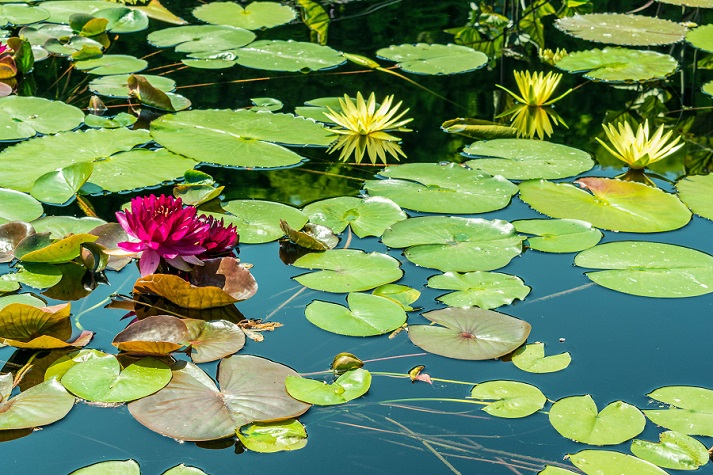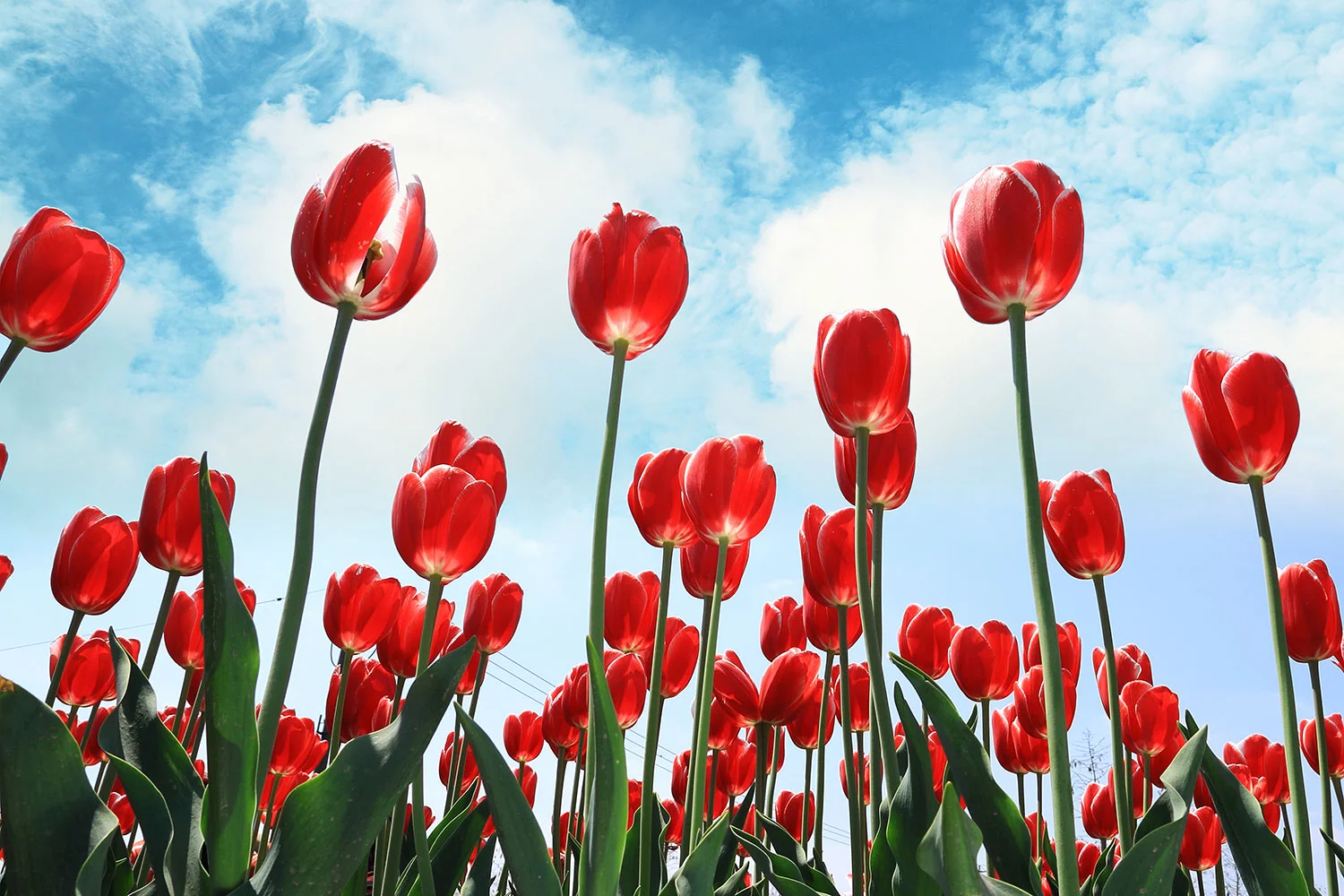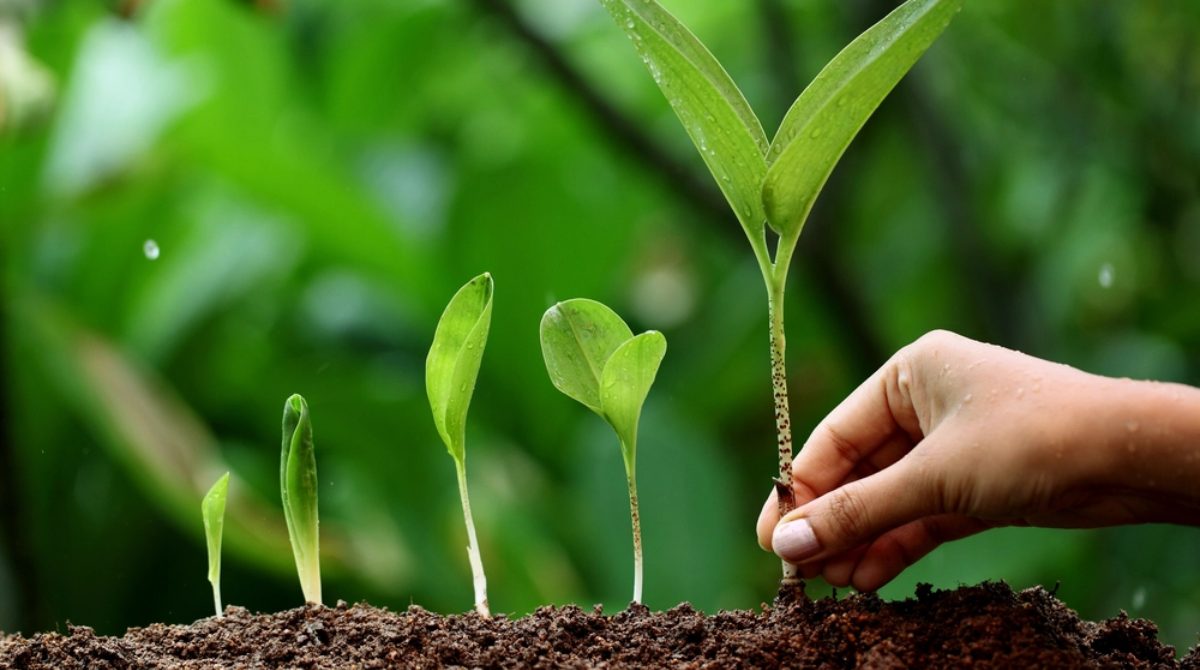Waterside gardens are a unique and serene addition to any landscape, 5 river plants, offering a tranquil retreat from everyday life. One way to elevate their beauty and ecological value is by incorporating river plants. These plants not only enhance the aesthetic appeal of your garden but also support biodiversity by creating a thriving ecosystem for wildlife. In this article, we’ll explore five exceptional river plants that can transform your waterside garden into a picturesque and eco-friendly haven.
What Are River Plants?
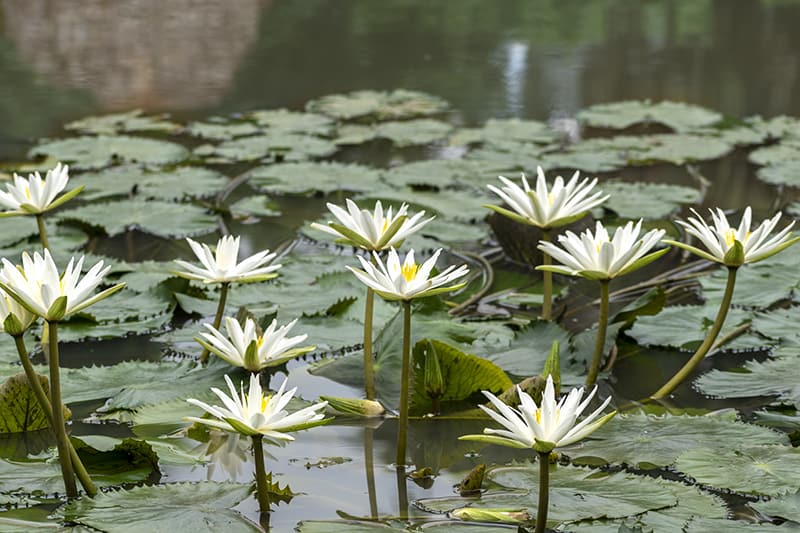
Table of Contents
River plants, often referred to as aquatic or riparian plants, are vegetation that grows in or near freshwater sources like rivers, streams, and ponds. These plants are adapted to thrive in moist, water-rich environments, with roots that can anchor in wet soil or even float on the water’s surface.
River plants play a vital role in their ecosystem:
- They help stabilize soil and prevent erosion.
- Provide shelter and food for various aquatic and terrestrial wildlife.
- Improve water quality by filtering pollutants.
Incorporating these plants into your waterside garden brings both ecological and aesthetic benefits.
Top 5 River Plants for Your Waterside Garden
Pickerelweed (Pontederia cordata)
Appearance: With heart-shaped leaves and vibrant blue-violet flowers, Pickerelweed adds a pop of color to your waterside garden.
Ecological Benefits: It provides shelter for small fish and attracts pollinators like bees and butterflies.
Planting Tips: Best planted in shallow water with full sun. Keep the soil consistently wet for optimal growth.
Cattails (Typha spp.)
Appearance: Iconic for their tall, slender stalks and fluffy brown seed heads, cattails create a dramatic visual element.
Ecological Benefits: Serve as nesting habitats for birds and filter water pollutants.
Planting Tips: Plant in shallow water or along the edge of a pond. Ensure plenty of sunlight for healthy growth.
Water Iris (Iris pseudacorus)
Appearance: Known for their striking yellow flowers, Water Irises are perfect for adding a splash of color.
Ecological Benefits: Attract pollinators and help prevent soil erosion.
Planting Tips: Place in shallow water or damp soil. Regular pruning helps maintain their appearance and prevents overcrowding.
Arrowhead Plant (Sagittaria latifolia)
Appearance: Features arrow-shaped leaves and delicate white flowers, adding elegance to any waterside garden.
Ecological Benefits: Provides food for ducks and other waterfowl.
Planting Tips: Thrives in shallow water or wet soil with partial to full sunlight.
Water Forget-Me-Not (Myosotis scorpioides)
Appearance: Small, bright blue flowers with yellow centers give this plant a charming and whimsical appeal.
Ecological Benefits: Attracts bees and other pollinators while stabilizing soil.
Planting Tips: Prefers moist soil or shallow water in shaded or partially sunny areas.
Benefits of Adding River Plants to Your Garden
- Supports Biodiversity: These plants provide shelter, food, and nesting spaces for various species, from birds to insects.
- Improves Water Quality: River plants filter pollutants and excess nutrients, helping maintain a balanced aquatic ecosystem.
- Enhances Aesthetics: Their unique shapes, textures, and colors create a visually stunning garden.
- Prevents Erosion: Root systems stabilize soil, reducing the risk of erosion along water edges.
How to Choose the Right River Plants for Your Garden
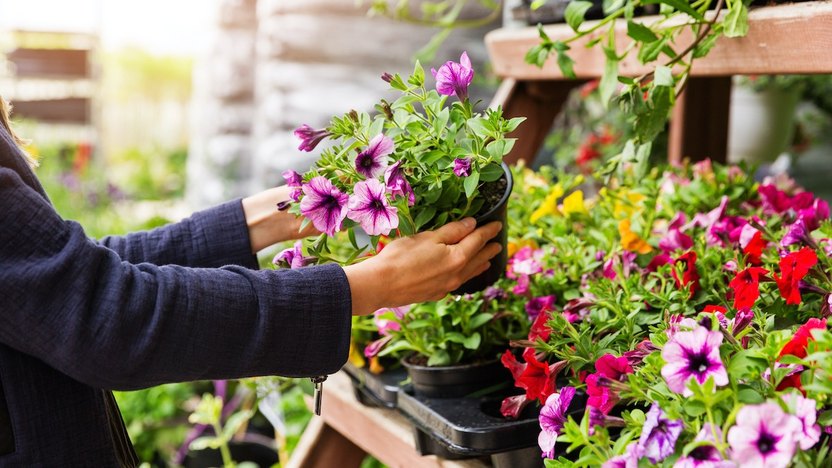
- Climate Compatibility: Ensure the plants you select thrive in your local climate.
- Water Depth: Some plants prefer shallow water, while others need damp soil.
- Garden Layout: Mix plants of varying heights and textures for a natural look.
- Wildlife Attraction: Choose plants that support the local ecosystem by attracting pollinators or providing habitats.
Popular river plants List
Here’s a detailed table format listing popular river plants with all essential details:
| River Plant Name | Scientific Name | Appearance | Ecological Benefits | Planting Tips | Ideal Conditions |
|---|---|---|---|---|---|
| Pickerelweed | Pontederia cordata | Heart-shaped leaves with vibrant blue-violet flowers. | Attracts pollinators like bees and butterflies; provides shelter for small fish. | Plant in shallow water with full sun; keep soil consistently wet. | Full sun, shallow water, moist soil. |
| Cattails | Typha spp. | Tall, slender stalks with fluffy brown seed heads. | Stabilizes soil, provides nesting habitats for birds, and filters water pollutants. | Plant in shallow water or wet soil along pond edges; ensure full sunlight. | Full sun, wet soil or shallow water. |
| Water Iris | Iris pseudacorus | Striking yellow flowers with long, slender leaves. | Attracts pollinators; prevents soil erosion along water edges. | Plant in shallow water or damp soil; prune regularly to avoid overcrowding. | Full to partial sun, shallow water or damp soil. |
| Arrowhead Plant | Sagittaria latifolia | Arrow-shaped leaves with delicate white flowers. | Provides food for ducks and waterfowl; supports local aquatic wildlife. | Plant in shallow water or wet soil; requires partial to full sunlight. | Partial to full sun, shallow water, or wet soil. |
| Water Forget-Me-Not | Myosotis scorpioides | Bright blue flowers with yellow centers, forming small, bushy clusters. | Attracts bees and pollinators; stabilizes soil and prevents erosion. | Grow in moist soil or shallow water; suitable for shaded or partially sunny areas. | Partial shade, shallow water, moist soil. |
| Water Hyacinth | Eichhornia crassipes | Floating plant with purple flowers and glossy green leaves. | Improves water quality by absorbing nutrients; provides shelter for small aquatic animals. | Best suited for ponds or calm waters; monitor growth to prevent invasiveness. | Full to partial sun, calm water, floating conditions. |
| Horsetail | Equisetum hyemale | Tall, reed-like plant with jointed stems. | Filters water and stabilizes soil; adds vertical interest to the garden. | Grow in wet soil or shallow water; thrives in partial to full sun. | Partial to full sun, wet soil, or shallow water. |
| Marsh Marigold | Caltha palustris | Bright yellow, buttercup-like flowers with rounded green leaves. | Attracts pollinators; helps stabilize soil near water edges. | Plant in wet soil or shallow water in sunny or partially shaded areas. | Full to partial sun, wet soil or shallow water. |
| Lotus | Nelumbo nucifera | Large floating leaves with pink or white flowers. | Provides shade for aquatic life; improves oxygen levels in the water. | Plant in water depths of 12–18 inches; requires full sunlight for blooming. | Full sun, still water, 12–18 inches depth. |
| Duckweed | Lemna minor | Tiny, floating plant with small green leaves. | Filters water by absorbing excess nutrients; serves as food for fish and waterfowl. | Spread over calm water surfaces; requires minimal maintenance. | Full to partial sun, floating on calm water. |
This table provides a quick reference for gardeners looking to add river plants to their waterside or aquatic gardens.
Caring for River Plants
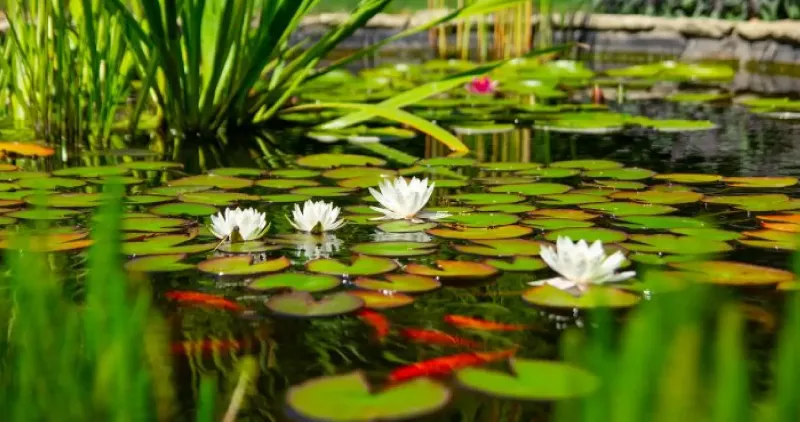
- Regular Pruning: Remove dead or overgrown parts to keep plants healthy and prevent overcrowding.
- Monitor Water Levels: Maintain consistent moisture in the soil or water depth as required by the plants.
- Watch for Pests: Inspect plants for pests or diseases and take action promptly if issues arise.
- Seasonal Care: Protect plants from freezing temperatures by moving potted varieties indoors during winter.
FAQs About 5 River Plants
1. What are river plants?
River plants are aquatic or semi-aquatic plants that thrive in or near freshwater sources like rivers, streams, and ponds. They are adapted to grow in water-rich environments and play a crucial role in maintaining ecological balance by supporting wildlife, stabilizing soil, and filtering water.
2. What are the benefits of adding river plants to a garden?
River plants enhance the beauty of waterside gardens with their unique textures and colors. They also promote biodiversity by providing food and shelter for wildlife, improve water quality by filtering pollutants, and prevent soil erosion along water edges.
3. What are some examples of river plants suitable for gardens?
Some popular river plants for gardens include Pickerelweed, Cattails, Water Iris, Arrowhead Plant, and Water Forget-Me-Not. Each of these plants offers unique visual appeal and ecological benefits.
4. Do river plants require special care?
Yes, river plants need specific care to thrive:
- Maintain consistent moisture or water depth.
- Prune regularly to prevent overcrowding.
- Monitor for pests and diseases.
- Provide seasonal care, such as protecting them during freezing temperatures.
5. Can I grow river plants in containers?
Yes, many river plants can be grown in containers, making them versatile for use in small spaces or controlled environments. Just ensure the container has adequate water and is placed in an area that meets the plant’s sunlight and moisture needs.
6. How do river plants support biodiversity?
River plants create habitats and provide food for various species, including birds, insects, amphibians, and small aquatic animals. They play a vital role in the ecosystem by fostering a balanced and thriving environment.
7. Are river plants invasive?
Some river plants can become invasive if not managed properly. For example, Cattails can spread quickly and dominate water edges. It’s essential to monitor their growth and choose non-invasive species suited to your region.
8. Can river plants survive in shaded areas?
Some river plants, such as Water Forget-Me-Not, can thrive in shaded or partially shaded areas. However, others, like Pickerelweed, require full sunlight to grow optimally.
9. What is the best time to plant river plants?
The best time to plant river plants is during the spring or early summer when temperatures are warmer, and the risk of frost has passed. This ensures they have ample time to establish roots and grow.
10. Where can I buy river plants for my garden?
River plants can be purchased from local nurseries specializing in aquatic plants or online stores. Be sure to choose plants that are suitable for your climate and garden’s water conditions.
Conclusion
River plants are an excellent way to bring beauty, biodiversity, and ecological balance to your waterside garden. From the vibrant Pickerelweed to the charming Water Forget-Me-Not, these plants offer numerous benefits for both your garden and the surrounding environment. Start transforming your garden today by incorporating these stunning river plants and enjoy the harmony they bring to your outdoor space.
For more gardening inspiration, visit GardenLoom.

